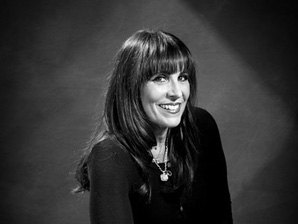Show Bloat: When Does a Conference Get Too Big?
 Reading Time: 3 minutes
Reading Time: 3 minutesSome people love shopping malls. Others like Times Square on New Years Eve. And the all-you-can-consume buffet still survives and thrives.
The giant trade show/conference is the business equivalent of those things. You may love ’em, hate ’em, or simply learn to get used to them and figure out how to navigate them. I fall into that last category.
This month, I attended two gigantic events — the National Restaurant Show and Collision. By the end of the week, I was ready to return to intimate gatherings and communities.
The Restaurant Show is sprawling, but perhaps because it involves the hospitality industry (rather than tech), it had a warmer, more human, and easy-to-navigate vibe. Collision moved to Toronto this year and is clearly suffering from growing pains.
A trade show veteran, I’ve worked for and with the two largest event organizers in the world. I understand the financial dynamics of the trade show and why “bigger is better” in that industry. Exhibitors and speakers want to see the aisles and presentation rooms packed.
In the case of Collision, however, I watched the show expand and transform over the past few years. It used to be a fun and funky alternative for tech start-ups and the geeks and investors who love them. As it grew in popularity, it took on more of the traits of the big global show — long lines, crowded aisles, huge corporate sponsors like banks and consulting companies, and long rows of tables in the media lounge rather than round seating and comfy couches. Speakers emerged onto ornate stage sets, in one case descending from on high.
Quantity and fanfare is no substitute for quality and community, Don’t get me wrong. I learned a lot. I made new connections. I discovered hidden gems as I wandered the aisles. The presentations were visually appealing, varied, and inspiring.
(Stay tuned for my posts about the great exhibitors I met at both shows.)
But, as one of the “little guys” (an independent writer rather than an A-list speaker, exhibitor, or sponsor), I was pretty much left on my own to chart my path. Amazingly enough, I ran into people I knew on the floors of both shows and used the app to connect with others. I was invited to a 40-person fun and friendly dinner, away from the din of the show floor and packed bars. But even as a “show pro” I needed to work pretty hard to find my tribe.
Advice for Event Organizers:
- Size matters to your exhibitors and executives, but your attendees may feel lost at a giant show. Plan and facilitate opportunities for smaller gatherings and communities. Manage lines efficiently.
- Train your volunteers well. Security and rules are important at large events, but paying customers and media deserve to be greeted with a smile. One of my media colleagues was booted from his podcast recording to make room for a celebrity. Don’t forget the little guy, show organizers!
- View your show floor through the eyes of your attendees as well as your exhibitors. If you were there for the first time, would you know where to go and what to do? Do you have enough seating for people with blistered feet? Is your show app intuitive and quick to load? Have you planned enough activities for attendees with a variety of tastes and preferences?
Advice for Attendees
- Pretend you’re visiting a Disney park. Spend some time before the show and at the start of each day figuring out what you want to do, what you want to see, and who you want to meet. But make enough time to simply wander and browse.
- Talk to strangers at conference sessions and in lounges. You never know who you might meet. Compare notes on things to see on the floor and in the city.
- Allow for downtime. Don’t be ashamed to head back to your hotel for room service one night. Or simply hit the gym or hang out with the locals. Attending big shows can be physically and mentally exhausting and you’ll free refreshed if you can make time to escape and chill.
Big does not always mean better. In fact, trade show organizers are now facing more competition than ever from vendors (primarily in the SaaS space), who are organizing “user conferences.” They have a captive and loyal community of people who use their products/services and they invite prospects so they can experience the brand’s culture and hear from satisfied customers. Although they may never replace the really big show they provide options to both attendees and exhibitors.
As you’re planning your event schedule for the rest of the year, think about the pros and cons of the “small curated plate” versus the “endless buffet table” and choose wisely.
After all, who wants to wind up with show bloat?
For more “Show & Tell”…

